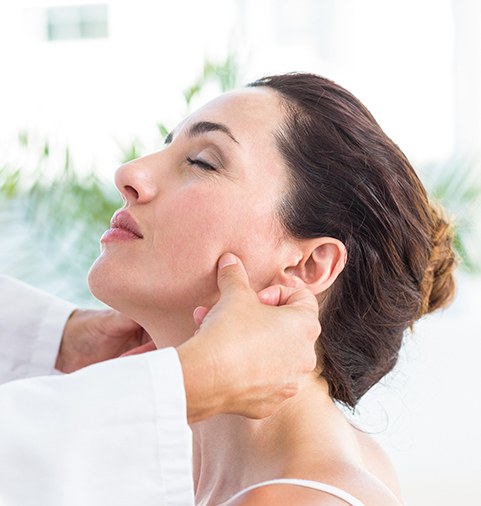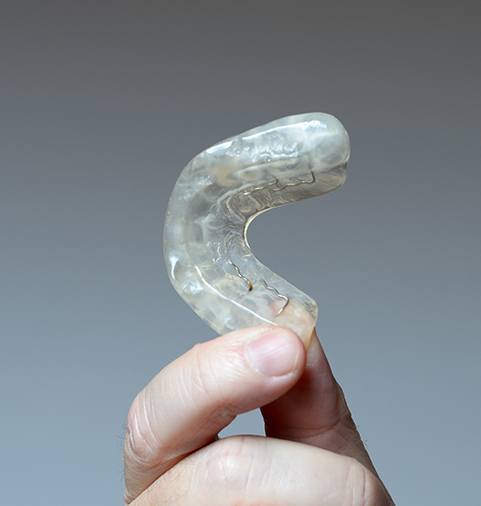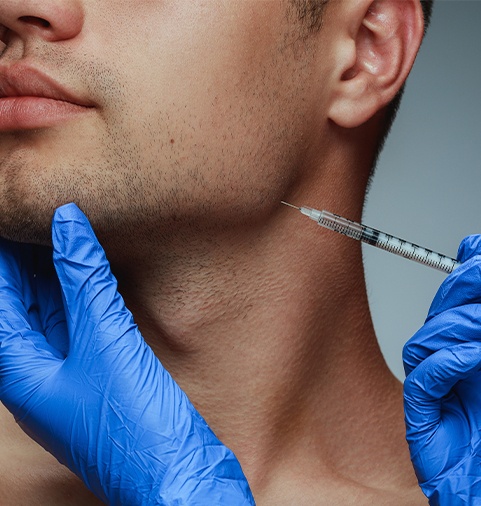

When someone hears the phrase “oral health,” most will think it refers to their teeth, and a few more will include their gums as well. Actually, there is one more important component: the jaw. A healthy jaw joint (known as the TMJ) is essential to being able to eat, speak, and smile properly. Issues with this joint (called a TMJ disorder, or TMD) can cause symptoms such as jaw pain, chronic headaches/migraines, and even neck/shoulder pain! Fortunately, our own Dr. Shetty is very familiar with this overlooked part of oral healthcare, so if any of the symptoms above sound familiar, be sure to contact us today to get the relief you need.

As part of every regular checkup, we always look at a patient’s TMJ. If we believe that they may be suffering from a TMD, the next step is to perform a few quick tests to find out what is specifically causing the issue. Injury, arthritis, teeth grinding, and an uneven bite can all lead to a TMD. After determining the root cause, Dr. Shetty will recommend the appropriate treatment, and you can learn about the different options below.

When the teeth do not come together properly, this can sometimes prevent the TMJ from reaching its natural resting position, which leads to tension in the muscles and ligaments of the jaw. This tension can create pain that easily radiates upward, which is why a TMD is one of the leading causes of frequent headaches! To address this issue, Dr. Shetty can perform what is called an occlusal adjustment, in which she slightly reshapes a few teeth so they come together smoothly and enable the jaw muscles to relax.

An occlusal splint is a type of therapeutic mouthpiece that can be used to address a variety of TMD-related issues. It works primarily by gently shifting the jaw into a more natural position which enables the muscles to relax and heal themselves. This kind of mouthpiece is only worn to bed, and it also provides a physical barrier between the teeth to protect from any nighttime grinding, which is very common with TMD. After a few months of consistent use, a patient should be able to go throughout their day symptom-free.

Many people are familiar with BOTOX®’s ability to eliminate facial wrinkles, but it’s also an excellent tool when it comes to relieving TMJ pain. BOTOX® can be strategically injected into spasming jaw muscles in order to help them calm down and heal, which helps relieve any associated pain. The treatment itself only takes a few minutes, but the results can last for months at a time. It’s one of the most reliable ways to get quick TMD relief.
In the vast majority of cases, a TMJ issue will not resolve itself over time. This is because the source is typically some kind of anatomical imbalance in the teeth, bite, jaw, and nearby muscles. Most patients who come to see us have been dealing with TMJ-related pain for years, so rather than waiting, seeking out professional help quickly is always the best approach.
Botox injections can provide relief within a few days that can last for about three to four months, but this isn’t a long-term solution. An occlusal splint can cause noticeable changes after being worn for one night that will become more apparent in the following weeks and months. This is also true for equilibrations/occlusal adjustments. Fortunately, once things start to get better after these two treatments, symptoms usually continue to improve until a patient feels completely better.
If your TMJ problem makes it painful to eat certain foods, like ones that require a lot of chewing, then avoiding those items will reduce discomfort. However, this should only be seen as a short-term fix, as many of the most nutritious foods like lean meats and fibrous vegetables shouldn’t be completely cut out of someone’s diet for health reasons. We recommend slightly adjusting your diet until a TMJ treatment is able to help and then slowly working harder-to-chew foods back into the rotation.
Yes, many dental insurance plans can be used to help pay for splints and the individual procedures associated with equilibrations (like crowns and bonding). However, most dental plans will NOT cover Botox. We can discuss all of these details with you in person after we’ve had a chance to look over your policy so that you have a clear idea of what you’ll be expected to pay out of pocket for your care.







